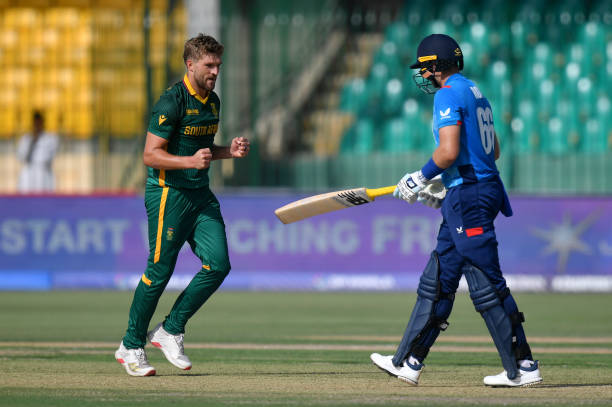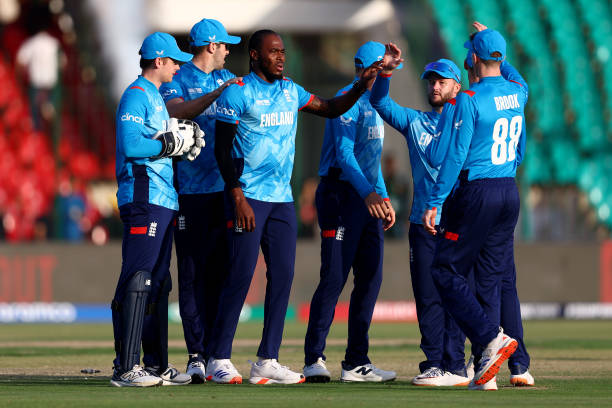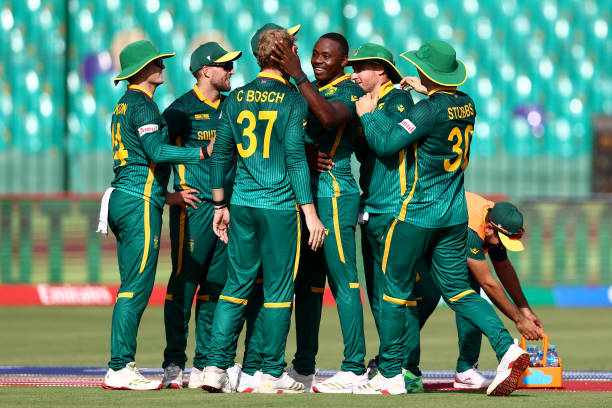
Karachi’s Collapse Explained
England’s recent seven-wicket defeat in Karachi against South Africa has sent shockwaves through the cricketing world. Marking their worst Champions Trophy campaign in history, England exited the tournament without a single victory. This latest failure underscores a troubling pattern for England’s ODI team, which has struggled to maintain the dominance they once commanded in white-ball cricket.
With Jos Buttler stepping down as captain and the team in desperate need of a rebuild, England must chart a new course. This article delves deep into the Karachi collapse, the underlying issues plaguing England’s limited-overs squad, and the key steps required to restore their competitive edge in world cricket.

England’s Champions Trophy Disaster: A Tournament to Forget
Poor Batting Performance in Karachi
England’s batting woes were on full display as they crumbled for just 179 runs in 38.2 overs. This dismal performance was emblematic of their struggles throughout the tournament. Key players, including Joe Root and Harry Brook, failed to convert promising starts into significant contributions. The collapse of the lower order, which lost three wickets for just eight runs, emphasized England’s long-standing issues with batting depth.
South Africa made light work of the chase, with Rassie van der Dussen (72*) and Heinrich Klaasen (64) guiding them to a comfortable victory in just 29.1 overs. England’s bowling attack lacked penetration, failing to trouble South Africa’s well-structured batting lineup.
A Broader Pattern of Decline
This loss was England’s seventh consecutive ODI defeat, a worrying trend that dates back to their disastrous 2023 World Cup campaign. Just four years after lifting the 2019 World Cup, England has slipped into mediocrity, raising concerns about their white-ball strategy, squad selection, and overall direction.
Key Issues Behind England’s ODI Struggles
1. Lack of Stability in Batting Order
England has failed to establish a consistent batting order, frequently rotating players in and out of the team. This instability has prevented key players from settling into defined roles, leading to inconsistent performances. The over-reliance on senior players like Root and Buttler has also put additional pressure on an otherwise underperforming middle order.
2. Declining Strike Rotation and Intent
During their golden period in ODI cricket (2015-2019), England’s batting approach was aggressive, with a focus on rotating strike and capitalizing on powerplay overs. However, recent performances suggest a regression, with England struggling to maintain a healthy run rate. This lack of attacking intent has left them vulnerable against quality bowling attacks.
3. Inconsistent Bowling Attack
England’s bowling attack lacks the bite and reliability that it once possessed. The absence of a world-class strike bowler and over-reliance on aging pacers have hurt England’s ability to defend modest totals. While Jofra Archer’s injury has been a significant setback, the team has failed to groom young pacers to fill the void.

4. Leadership and Captaincy Uncertainty
Jos Buttler’s resignation as England’s white-ball captain marks the end of an era. While he was a key figure in England’s 2019 World Cup-winning squad, his tenure as captain has been underwhelming. With his departure, England must find a leader capable of reviving their struggling ODI fortunes.
Lessons from Past Rebuilds: A Look at England’s ODI Transformations
How England Rebuilt After the 2015 World Cup Failure
Following England’s embarrassing group-stage exit at the 2015 World Cup, the team underwent a revolutionary overhaul. Under the leadership of Eoin Morgan and coach Trevor Bayliss, England adopted an aggressive batting philosophy, introduced fresh talent like Jason Roy and Ben Stokes, and restructured their bowling attack.
This transformation led to a golden era of white-ball dominance, culminating in the historic 2019 World Cup triumph. The current team must learn from this period and embrace bold changes if they wish to reclaim their status as an elite ODI side.
The Road to Rebuild: Key Steps for England’s ODI Revival
1. Appointing a Strong Captain and Leadership Group
England’s first step should be appointing a leader who can inspire confidence and drive change. Potential candidates include:
- Harry Brook – Young, aggressive, and fearless, Brook represents the new generation of English cricket.
- Ben Stokes – If willing to return to full-time ODI leadership, Stokes brings proven experience and a winning mentality.
- Moeen Ali – As a senior figure, Moeen could provide short-term stability as England transitions to a new era.
2. Revamping the Batting Order
England must focus on establishing a stable and dynamic batting lineup. They should:
- Identify long-term openers who can anchor the innings.
- Build a strong middle order with attacking intent.
- Prioritize young talent like Will Jacks and Phil Salt, who can bring fresh energy to the squad.

3. Strengthening the Bowling Attack
England needs to develop a world-class pace unit while also nurturing quality spin options. Key areas to address:
- Finding replacements for aging pacers like Chris Woakes and Mark Wood.
- Integrating promising fast bowlers like Gus Atkinson and Josh Tongue.
- Identifying a frontline spinner to complement Adil Rashid in the long term.
4. Embracing a Modern ODI Strategy
To compete with the best, England must return to their fearless brand of cricket. This means:
- Prioritizing power-hitting while ensuring proper strike rotation.
- Utilizing data-driven analysis to optimize game strategies.
- Encouraging players to take calculated risks instead of adopting a defensive mindset.
5. Improving Squad Depth and Rotation Policy
England’s bench strength has been underutilized. The team should:
- Regularly rotate players to prevent burnout.
- Develop a strong second-string squad capable of stepping up in major tournaments.
- Focus on all-rounders who can provide depth in both batting and bowling.

SUGGESTED FOR YOU
Lewis Crocker Wins Paddy Donovan’s in 8th round: Shocking Controversy
Conclusion: England’s ODI Future Hinges on Bold Decisions England’s humiliating exit from the Champions Trophy has laid bare the cracks in their ODI setup. The Karachi collapse should serve as a wake-up call, pushing England’s management to make bold and decisive changes.
A return to the aggressive and fearless brand of cricket that made them world champions is essential. By appointing strong leadership, revitalizing their squad, and embracing a modern white-ball strategy, England can reclaim their position as a dominant force in ODI cricket.
The journey to rebuild starts now. Will England rise from the depths of Karachi’s disappointment and usher in a new era of success? Only time will tell.









